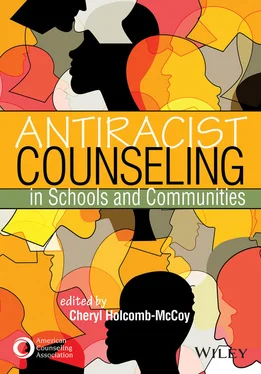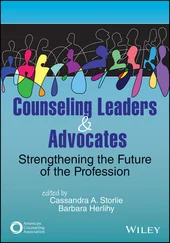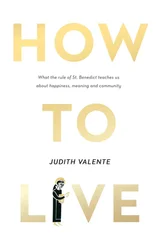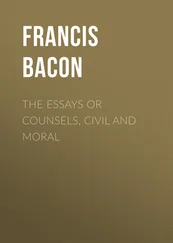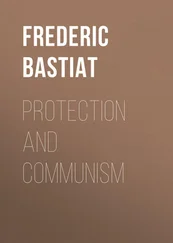Racism and anti-Blackness permeate every aspect of life in the United States and beyond—including the language used to describe people. Throughout history, the use of dehumanizing names and the refusal to manipulate language used to refer to Black adults (e.g., “Mr.,” “Mrs.,” “Dr.,” “Professor”) have perpetuated racist ideas about which groups are inferior and superior. For these reasons, it was essential to address the capitalization of “Black” and “Brown” before writing this book. I agonized over whether to capitalize “Black” and “Brown” in the text. Many of the chapter authors shared the same agony. In my chapters, I capitalize “Black” and “Brown” and use these terms to describe the unified and shared oppression and political interests of people of African descent; people who identify as Latinx, Hispanic, or Asian; and people from an Indigenous population. Some of the chapter authors refer to “people of color” rather than “Black” and “Brown” people and some capitalize “white.” Some of the authors use BIPOC (pronounced “buy-pock”), an inclusive term that stands for “Black, Indigenous, and people of color.” It is intended to combat the erasure of these diverse cultures. The inconsistencies in our use of these terms illustrate the diverse viewpoints on which labels are most appropriate. Regardless, the term “minority” is avoided in this book because this label lacks specificity, denotes inferiority, and neglects an overall sense of humanity.
It is noteworthy that many U.S. publishers and authors have adjusted their practices around capitalizing “Black” and “Brown.” Many years ago, Kailin (2002) argued that comparing Black and white racial labels is flawed because “white” does not denote a particular ethnicity or nationality. Black, in contrast, represents an ethnicity describing peoples of African descent. She stated,
One of the reasons people of the African diaspora may call themselves Black rather than a specific ethnicity is because their true ethnicity was robbed from them during slavery when all attempts were made to erase the history and identity of the African peoples. (Kailin, 2002, p. xxi)
Hence, “Black” denotes nationality, whereas “white” denotes skin color. In June 2020, the Associated Press changed its usage rules to capitalize the word “Black” when used in the context of race and culture but will continue its practice of not capitalizing “white.” The New York Times followed suit and has now changed its policy to capitalize “Black.” It is important to note that the term “African American” is not wrong, and some prefer it. However, I believe that capitalizing “Black” and “Brown” is desirable because these descriptors are more inclusive of ethnicities united by shared oppression, race, geography, and culture.
As counselors, we have been trained to empathize, to give unconditional positive regard, and to embrace diverse perspectives. These are attributes of an effective counselor. At the same time, it is critical that we acknowledge the difficulty of our work, in particular as we embark on an antiracist journey. Reading this book might trigger intense emotions, including anxiety, fear, frustration, isolation, resentment, and self-blame. For Black and Brown counselors, discussing one’s experiences with racism is exhausting and may create feelings of isolation and despair. So I suggest that you breathe before beginning this book and take self-care breaks throughout your reading. Take care of yourself on this antiracist journey. Discuss the concepts with trusted colleagues and others who are on the same journey. Self-preservation and antiracist practice are intertwined and complementary. As Black feminist writer Audre Lorde (1988, p. 129) stated, “Caring for myself is not self-indulgence, it is self-preservation, and that is an act of political warfare.”
Breathe. Exhale.
1 Gorski, P. C. (2019). Fighting racism, battling burnout: Causes of activist burnout in US racial justice activists. Ethnic and Racial Studies, 42(5), 667–687. https://doi.org/10.1080/01419870.2018.1439981
2 Johnson, R. N. (2012). The academic opportunity gap: How racism and stereotypes disrupt the education of African American undergraduates. Race Ethnicity and Education, 15(5), 633–652.
3 Kailin, J. (2002). Antiracist education: From theory to practice. Rowman & Littlefield.
4 Kendi, I. X. (2019). How to be an antiracist. One World.
5 Lorde, A. (1988). A burst of light: Essays. Firebrand Books.
This book is dedicated to the millions of professional school counselors, mental health counselors, and helping professionals who have committed themselves to ensuring justice for their students, their clients, and their clients’ communities.
Thanks to everyone on the American Counseling Association’s Publications team, including Nancy and the amazing content editors, who helped me so much. Special thanks to Chelsea for her patience and amazing assistance in bringing all the pieces of the book together.
I extend a special acknowledgment to two women who continue to inspire me: Ms. Colethia Holcomb, my late mother, and the late Associate Professor Vivian Lee, an unflappable school counselor educator, human rights activist, and friend.
Cheryl Holcomb-McCoy, PhD, believes in the revolutionary power of school counseling. A fellow of the American Counseling Association with 30 years of experience as a kindergarten teacher, elementary school counselor, family therapist, and most recently university professor and administrator, she has a wealth of knowledge, expertise, and wisdom. Professor Holcomb-McCoy is currently the dean of the School of Education and a professor at American University (AU). She is also the author of the best selling book School Counseling to Close the Achievement Gap: A Social Justice Framework for Success . In her 5 years as dean, Professor Holcomb-McCoy founded AU’s Summer Institute on Education, Equity and Justice and the AU Teacher Pipeline Project, a partnership with the (Washington) DC Public Schools and Friendship Charter Schools. She is also actively working to develop an antiracist curriculum for teachers-in-training. Prior to leading the School of Education at AU, she served as vice provost for faculty affairs campus-wide and vice dean of academic affairs in the School of Education at Johns Hopkins University, where she launched the Johns Hopkins School Counseling Fellows Program and the Faculty Diversity Initiative. Professor Holcomb-McCoy has also been an associate professor in the Department of Counseling and Personnel Services at the University of Maryland College Park and director of the School Counseling Program at Brooklyn College of the City University of New York. A decorated scholar, she has written 16 chapters in edited books and more than 40 articles published in peer-reviewed journals. From 2014 to 2016, she served as a consultant to former First Lady Michelle Obama’s Reach Higher Initiative, a program dedicated to supporting first-generation students in making it to and through college. She also serves on the board of Martha’s Table, a nonprofit that supports health and wellness for children and families in the nation’s capital. Professor Holcomb-McCoy’s passion for school counseling, mental health, and wellness starts at home. As a proud mother of two, she knows firsthand the importance of systemic change to help students reach their full potential. A proud member of Delta Sigma Theta Sorority, Inc., Professor Holcomb-McCoy holds bachelor’s and master’s degrees from the University of Virginia. She earned a doctorate in counseling and counselor education from the University of North Carolina at Greensboro. She lives in Potomac, Maryland, with her husband and two children.
Читать дальше
